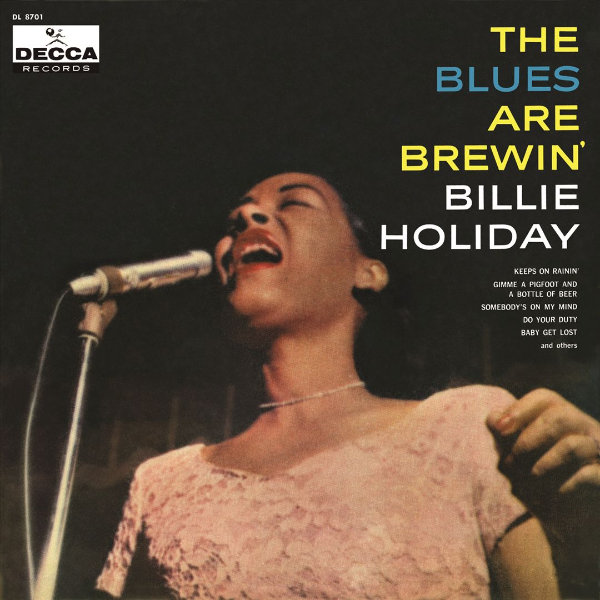Concert Reviews: Denver Jazz Fest

The inaugural Denver Jazz Fest unfurled over four days from April 3 to 6, 2025. The sprawling festival presented 32 concerts at 12 different venues throughout the Denver and Boulder area. The timing was meant to coincide with Jazz Appreciation Month as well as tap into the ongoing events and celebrations associated with the 40th anniversary of KUVO, Denver’s storied jazz radio station. The lineup included world-class national and international acts along with local jazz heroes. With many concerts scheduled simultaneously, the biggest problem was trying to select which outstanding acts to see and which to regretfully miss.
Denver Jazz Fest founders and promoters Don Lucoff and David Froman made those decisions particularly difficult, curating a program of exceptional talent. The stylistic diversity on display was as vast as the open prairies east of Denver, and the prominence of many of the performers in today’s jazz landscape rivaled the Rocky Mountain peaks to the west.
The inaugural fest also offered many free jazz concerts around town. Beyond concerts, the DJF offered an educational component with a live interview of Charles McPearson and Terell Stafford by KUVO’s Arturo Gomez and performances by local jazz students with the Colorado Conservatory for the Jazz Arts (CCJA). Stafford also conducted a master class for jazz students with local pianist Dawn Clement. McPhearson held a master class with the CCJA students. Yet another class focused on recording techniques for jazz performances. Much of the educational activities were co-sponsored by Temple University and the Boyer College of Music and Dance.
All this was obviously far too much for a single human to absorb, but what a delightful problem to have. After considerable deliberation, I settled on seeing Ganavya, Headhunters, Ghost-Note and Dianne Reeves. The artists left on the table included Omar Sosa, Charles McPhearson with Terell Stafford, Joe Lovano and the Paramount Quartet, Bill Frisell, Isaiah Collier, Garaj Mahal, Art Lande Trio and many more.
Many, if not most, of the shows sold out, a testament to the wide and enthusiastic jazz audience in Denver and also to the high-caliber programming of the Denver Jazz Fest.
Ganavya, Boulder Theater April 4
On Friday night, vocalist Ganavya Doraiswamy turned the Boulder Theater into a Hindu prayer temple. Charles Overton accompanied her airy, ritualistic vocals on harp and Max Ridley played bass. Ganavya is of Indian descent and her music is firmly rooted in that culture. Droning is a key aspect of that music and Ridley’s bass often played that role, while Overton’s harp contributed ethereal spirituality in the vein of Alice Coltrane.
But it was Ganavya’s voice that truly elevated the evening. She sang in English, Tamil and, often, wordless, scat-like vocalizations. With an impressive range and an ability to alter her vocal texture on a whim, Ganavya took command of the theater. At times playful, at other times serious, her singing was always impassioned and sincere. Borrowing a page from Dianne Reeves, Ganavya sang/talked about some of the things on her mind. Upon taking her place at center stage, she had to adjust the mic stand, explaining that it had been set up during the sound check when she was wearing shoes, but she was performing that night in her stocking feet.
Ganavya was born in New York, but was raised in Tamil Nadu, a state in southeastern India. She credits Alice and John Coltrane as inspirations. Their spirituality, combined with her Hindu faith, informs much of her music. Indeed, on her recent album Daughter of a Temple (Leiter Verlag, 2024), she performs “A Love Supreme.”
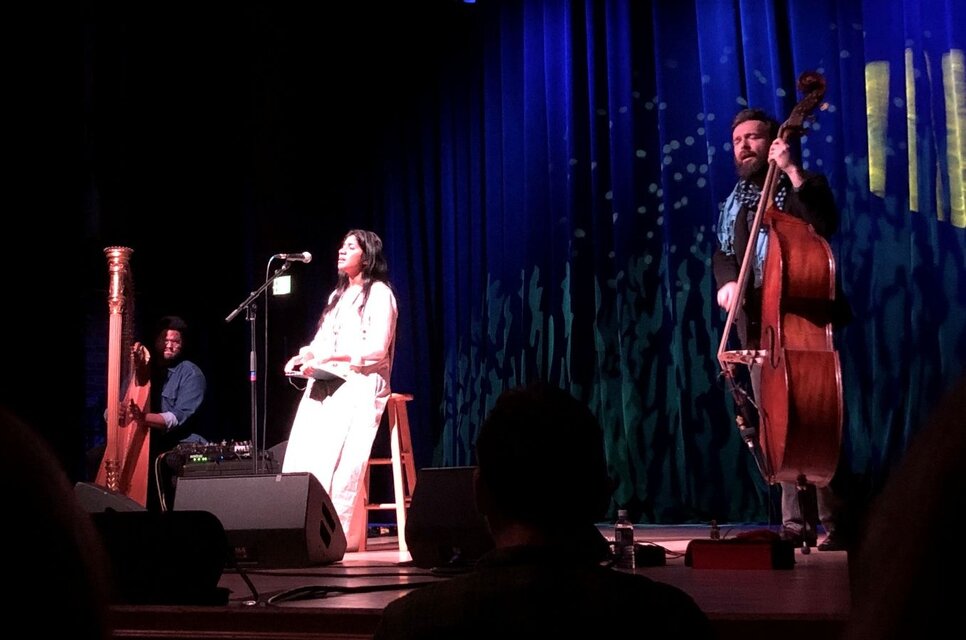
Ganavya frequently solicited audience participation, not as a gimmick, but as an authentic expression of community. The communal singing heightened the spirituality of the evening, drawing the audience members into participation and not merely observation. In one song, she explained how our singing would create nine ethereal jewels and when we gave them away, we would receive a tenth. The audience joined in the singing of the nine refrains and the final jewel was Ganavya herself, radiating joy as she shared a piece deeply rooted in her cultural and spiritual identity.
Ganavya performed on a dark and stormy night in Boulder with icy roads in every direction. The conditions probably impacted the attendance, which came in somewhat below half capacity. However, a bigger factor may have simply been that not many people know about Ganavya yet. Over time, that’s bound to change, but for now, Ganavya is certainly a talent deserving of wider recognition.

Headhunters, Cervantes Masterpiece, Denver, April 5, 2025
In sharp contrast to the prayerful, meditative environment created by Ganavya on Friday night, Saturday night at Cervantes was a fiery funk frenzy. The Headhunters and Ghost-Note were both on the bill, representing two generations of the funk.
Headhunters, with the benefit of 50 years of playing, had plenty of classic tunes to choose from, and they laid down many of them Saturday night, including such chestnuts as “Watermelon Man” and “Butterfly.” Percussionist Bill Summers is technically the only original member still in the band, although the other long-time member, Mike Clark, joined the band for the second Headhunters’ album, Thrust (Columbia, 1974), and has been with the band ever since.
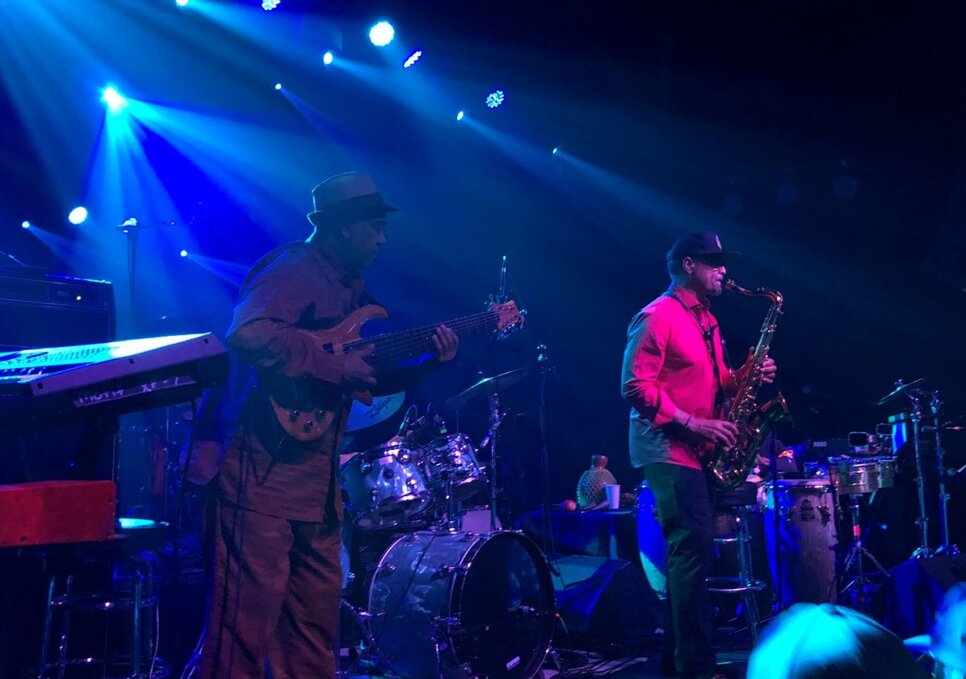
In an echo of Ganavya’s spirituality, Summers, at one point, came to center stage to bless the proceedings with a sprinkle of water from a plastic bottle and some Native American chants. Summers is a student of the history of the rhythm, having delved into African and Cuban rhythms to help inform his own playing. The plastic bottle soon gave way to a beer bottle which Summers used to blow the introductory notes to the Headhunters’ unique and iconic version of “Watermelon Man.”
Big Chief Donald Harrison had been holding down the sax chair in the Headhunters in recent times. Saturday night, however, brought Craig Handy to the stage with sax in hand. Although Harrison is the primary sax player on the Headhunters’ latest album, The Stunt Man (Ropeadope, 2024), Handy appeared as a guest on one track, perhaps acting as a warm-up for stepping in for Harrison full-time. In any event, Handy proved entirely capable of covering the sax parts.
Chris Severin, on a massive seven-string bass, proved to be a highlight, not just holding down the bottom but continually adding flourishes throughout. Shea Pierre, on keyboards, is another new member of the band, but he, too, slid in flawlessly, effortlessly capturing Herbie Hancock’s signature sounds.
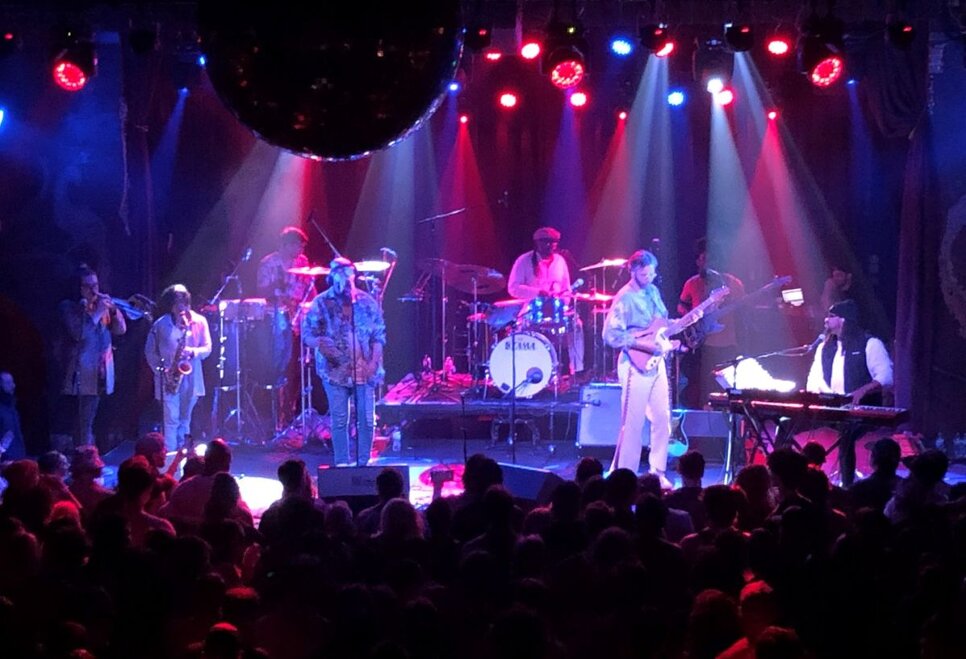
Ghost-Note, Cervantes Masterpiece, Denver, April 5,2025
In contrast to the Headhunters’ half-century run (and counting), Ghost-Note is a relatively spritely 10 years old. They’ve used those 10 years wisely, crafting an extraordinarily tight unit, with an agility level far beyond a typical 8-piece band. Indeed, Ghost-Note could turn on a dime. And did so repeatedly. Much of it was executed playfully, not unlike a cat batting around a furry funk toy. The entire ensemble would play short, syncopated phrases that were continually surprising in their twists and turns and their impact from all eight players perfectly on top of each note.
Chris Severin, on a massive seven-string bass, proved to be a highlight, not just holding down the bottom but continually adding flourishes throughout. Shea Pierre, on keyboards, is another new member of the band, but he, too, slid in flawlessly, effortlessly capturing Herbie Hancock’s signature sounds.
The band is co-led by drummer Robert “Sput” Searight and percussionist Nate Wirth, both veterans of Snarky Puppy. Searight acted as emcee throughout the evening, often inquiring whether the last tune was funky. It was. It always was.
We heard several tunes from the band’s latest album Mustard n’ Onions (Mack Avenue, 2024) including “Bad Knees” and “JB’s Out! (Do It, Babay)” a tribute to one of their primary influences, James Brown. We also heard a funky take on “Papa Was A Rolling Stone” and, in a brief laid-back moment, “Feel Like Making Love,” as a tribute to Roberta Flack.
Seemingly able to find a groove anywhere, the band made a pitch for Ghost-Note merch toward the end of their set, but it quickly turned into a funky tune about the virtues of buying Ghost-Note vinyl. As a partial disclaimer, Searight explained that we had failed to purchase “Ghost-Note Premium” and as a result, we had to put up with advertisements.
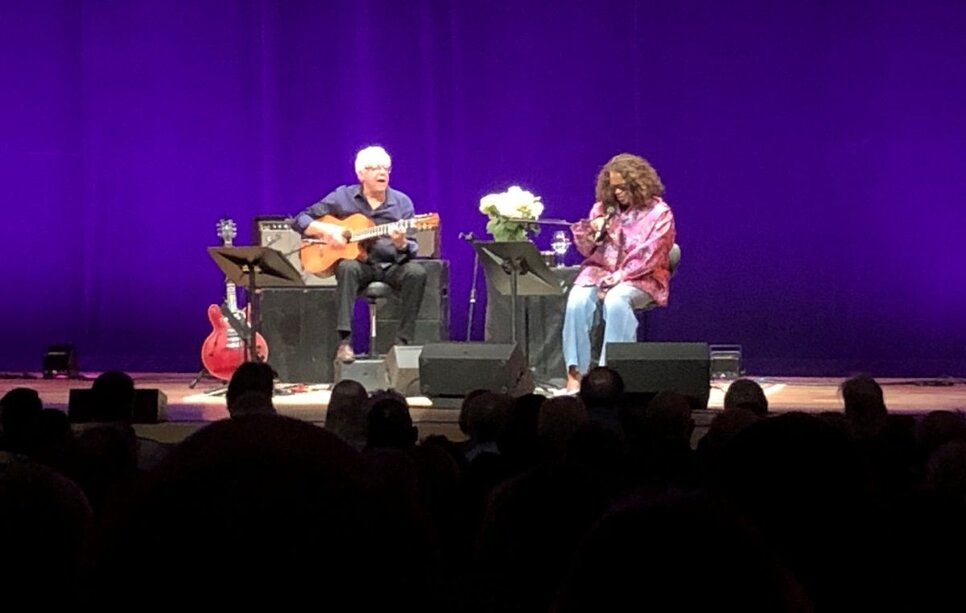
Dianne Reeves and Romero Lubambo, Newman Center, April 6, 2025
The Denver Jazz Fest wrapped up, for me, anyway, with Denver native Dianne Reeves accompanied by Brazilian guitarist Romero Lubambo. Reeves is back living in Denver after moving to Los Angeles in her youth to seek her fame and fortune, which she found. It’s been 12 years since Reeves’ last album, Beautiful Life (Concord Records, 2013), and a few years since she played a formal concert in Denver. So, it was appropriate that she began her set with “What’s New?” She assured the audience that she was just the same and in the vocal department, and that was very obviously true. Reeves is simply among the top female jazz singers on the scene, and she continually proved that throughout the performance. Along the same lines as “What’s New?” was the second tune of the set, the standard “Social Call.” Just a neighbor-lady dropping by to chat a bit.
As usual, Lubambo mostly played a nylon-string acoustic guitar. He’s been Reeves’ go-to accompanist since they first met on a trip she made to Brazil in the 1990s. She sang/told the story during “Our Love Is Here To Stay,” explaining that he’s been on every album she’s released since that time. Lubambo also had an electric hollow-body guitar at his disposal which he played on a couple of tunes, using it at one point to show that his ability isn’t limited to jazz and Brazilian music, but he could also play the blues on the introduction to “All Blues.” His playing was consistently virtuosic and intuitive to Reeves and her singing. Which, of course, is why he’s Reeves’ go-to accompanist.
One of the highlights of the set was a cover of Pat Metheny’s and Lyle Mays’ “Minuano (Six Eight).” Kurt Elling wrote lyrics to that tune in the early 2000s, but Reeves’ version Sunday night was strictly wordless vocals.
Reeves was chatty throughout, such as her introduction to her song “9,” which is about her life in her neighborhood when she was 9 years old. The concert started at 4 in the afternoon and Reeves commented a couple of times how convenient that was so that she and the audience could get home in time to see the finale of the “White Lotus” TV series.
During the set, Reeves displayed all her gifts, masterful range and control, continually creative improvisations and an authoritative voice like few other singers on the scene. Some of her last performances in Denver were with the Colorado Symphony. While her voice and her music pair well with a symphony, Sunday night’s show was special because of the minimal accompaniment leaving the focus on Reeves and her remarkable voice.
Denver Jazz Fest Conclusion
The inaugural Denver Jazz Fest was a resounding success. The promoters are already planning for next year’s fest, and they’ve set aside April 9 – 12, 2026. My advice for next year’s attendees: get plenty of rest beforehand – you’ll need it.
Stay connected to KUVO’s programs and our community! Sign up for the Oasis E-News today!
